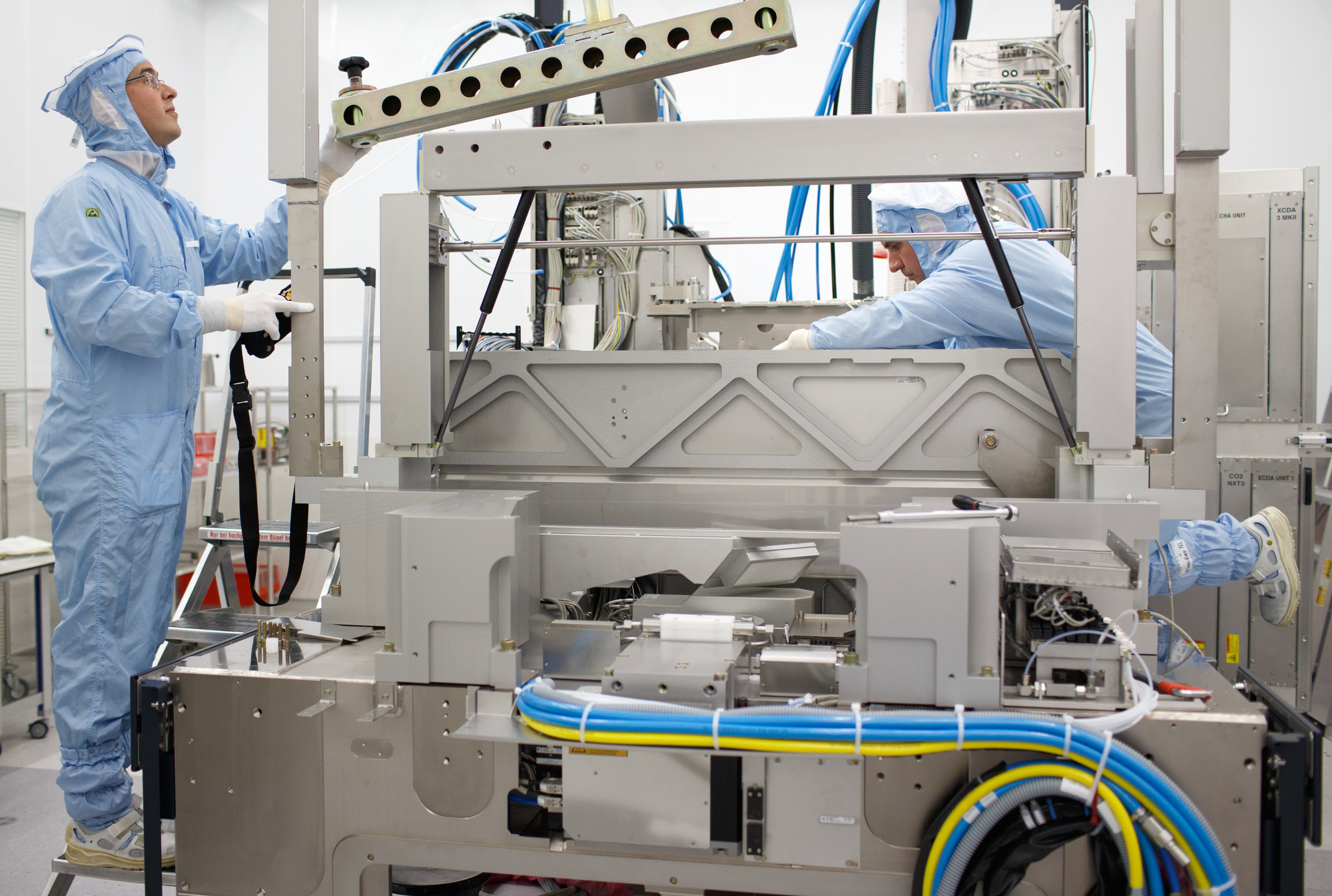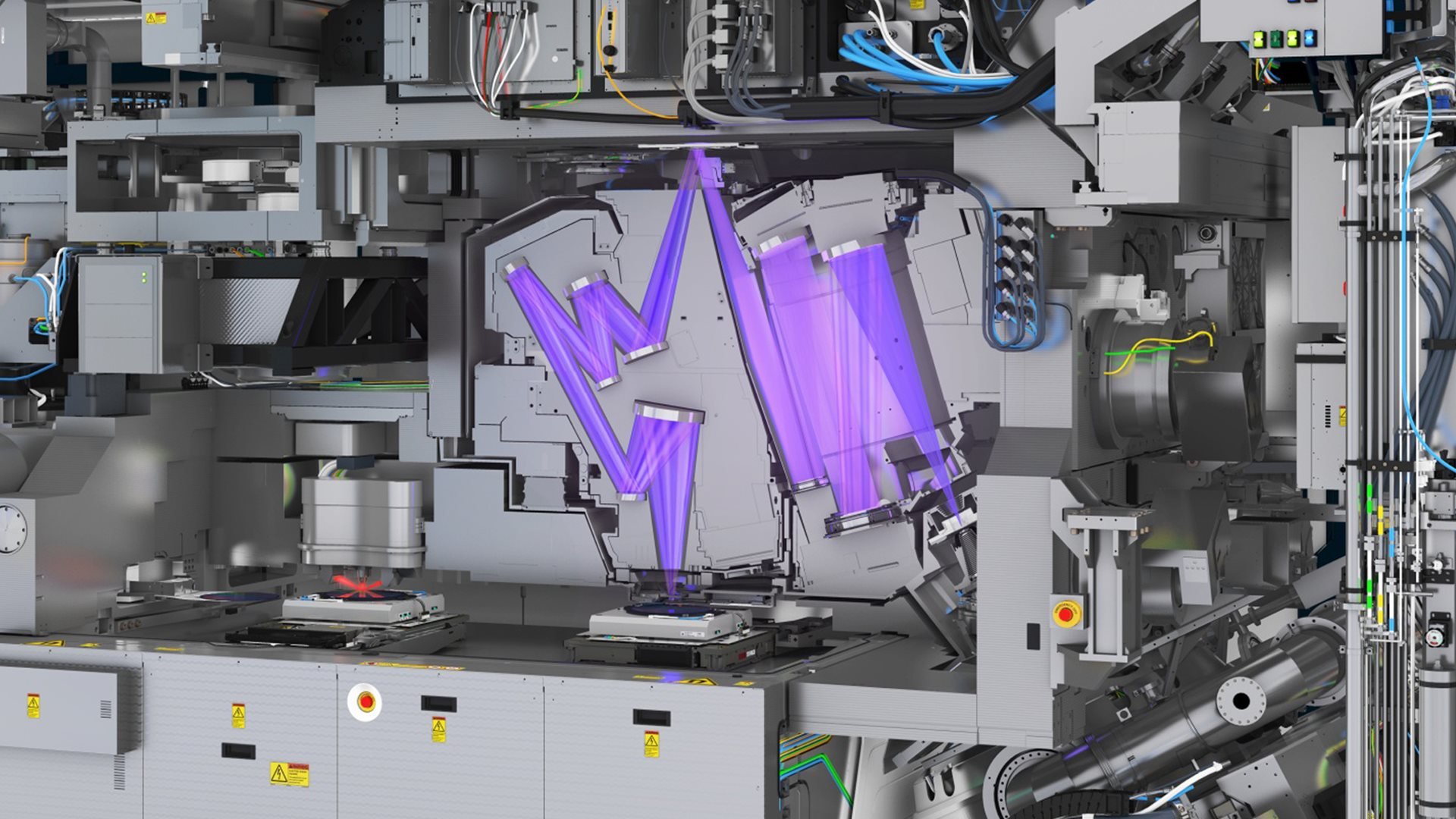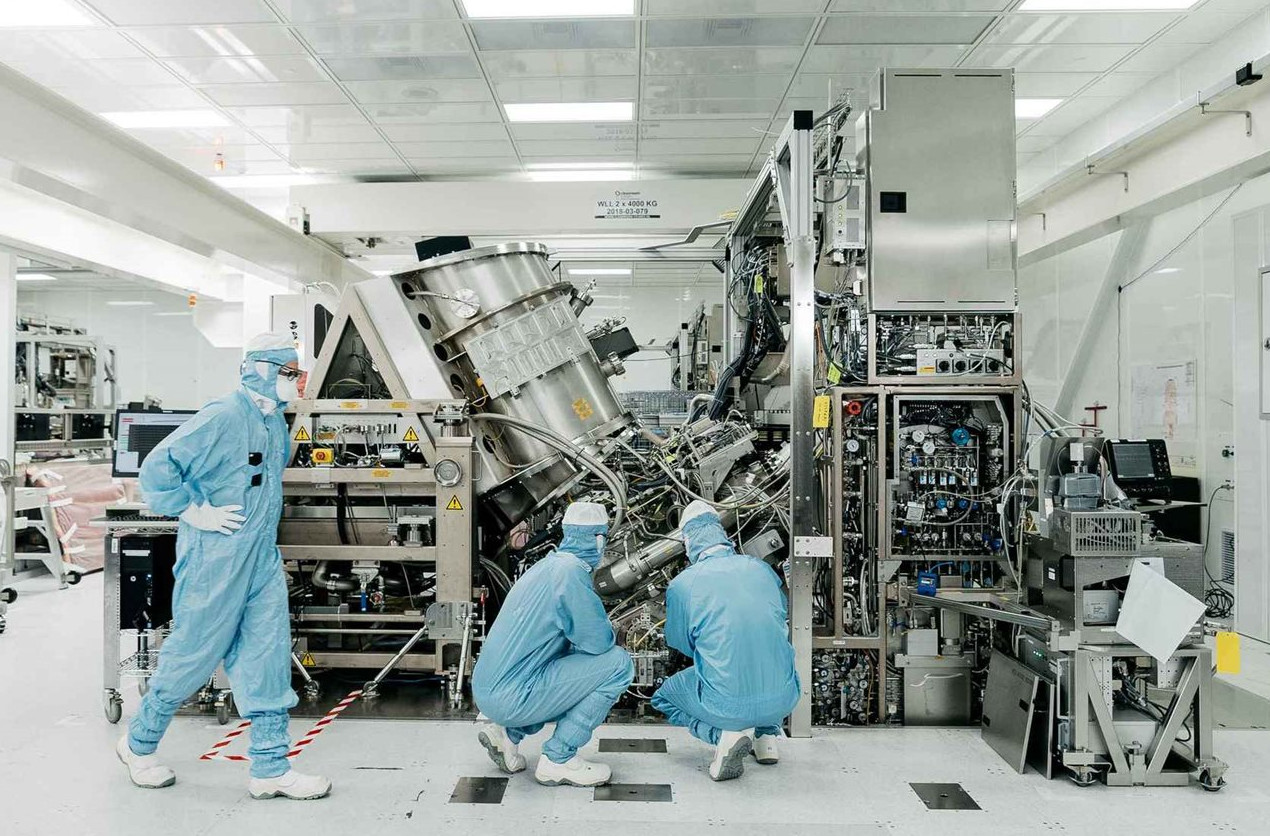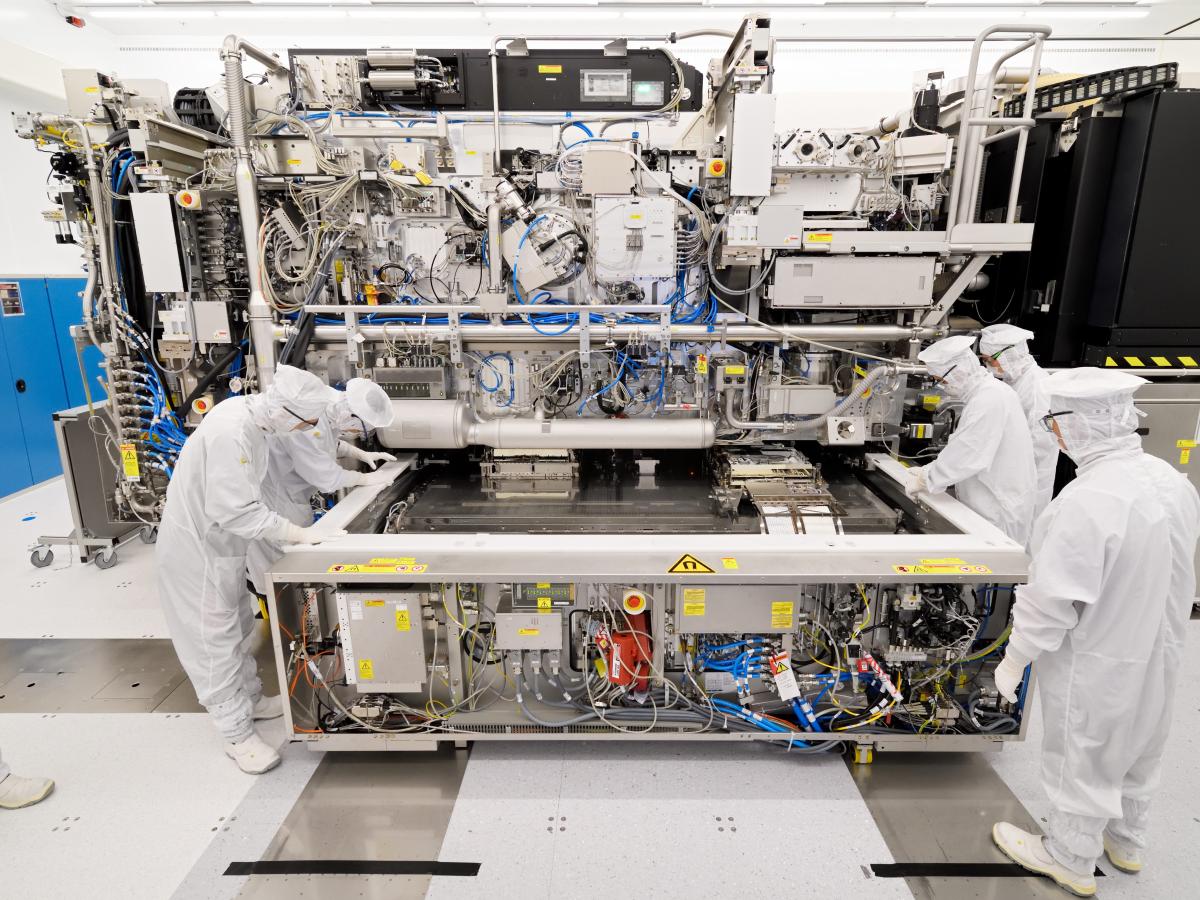The global chip shortage crisis made the name ASML begin to gain more attention. This little-known tech giant is the one behind every advancement in the semiconductor industry for many years now.
As of now, this 37-year-old company with 31,000 employees is the only one in the world capable of producing the extremely complex machines that are essential to making modern chips. world today.
Costing up to $140 million, the machines can emit extremely narrow beams of light that hit semiconductor wafers that have been treated with chemicals.”Contrast“. From here, the machine creates intricate carvings and patterns on the wafers that form the transistors and their incredible processing power.
The decisive machines for the global semiconductor race

This process is called lithography. The latest version of this machine is called EUV (extreme ultraviolet lithography) engraving machines, which use ultraviolet light to engrave details on that chip. Prior to that, ASML’s lithographic printers used DUV (Deep Ultraviolet) ray technology and to this day, they are still used by many manufacturers.
But the rare EUV engravers are only sold by ASML to a small number of chip manufacturers including: TSMC, Samsung and Intel. Each machine has more than 100,000 different components and it takes 40 containers or 4 large cargo planes to carry all these packages. To date, ASML has sold just over 100 giant machines, of which the company sold 31 units last year alone.
Notable among them are mirrors manufactured by Zeiss, with the flattest surface man-made ever created. But the hardest part about this machine is the light source. The light source in ASML’s EUV machine emits tin balls about 30 microns wide (each micron equals 1/1000 mm), fired twice by CO lasers2 strongest in the world. The first shot to get ready, the second shot turns the tiny tin pellets into a mass of plasma and from there emitting photons of EUV rays.

For DUV-based machines, besides ASML, there are other suppliers, but for EUV technology, ASML is the sole supplier and no one seems to be able to keep up with this monopoly. It took ASML nearly 30 years of research to perfect the current EUV-ray chip manufacturing process, while all of its competitors have long since given up.
The importance of these machines to the semiconductor industry is so great that former US president Donald Trump once pressured the Dutch government not to sell these machines to Chinese customers. Therefore, Chinese chip manufacturers have been unable to produce high-end chips like TSMC, Samsung and Intel. Currently, the Biden administration also shows no sign of wanting to reverse these bans.
Chris Miller, professor at Tufts University’s Fletcher School of Law and Diplomacy, who is writing a book on the history of the semiconductor industry, said:The EUV ray used by ASML’s most modern machines has a wavelength of 13.5 nanometers, allowing you to engrave extremely small details on silicon.“For the semiconductor industry, creating those microscopic details is fundamental to the power of every chip.
The latest processors on Apple’s iPhones, iPads, and MacBooks are made from ASML’s EUV chip engraver that contains about 10 billion transistors inside it.
Sales boom
The chip crisis has caused demand for ASML machines to skyrocket – not only the high-end EUV machines but even the lower DUV line of machines have seen orders skyrocket.

Becoming an indispensable device for the semiconductor industry, ASML believes its sales will explode in the next decade.
This past September, ASML said it expected a sales boom over the next decade. It is expected that annual revenue will reach 24-30 billion Euro in 2025 with total profit margin between 54% and 56%. This forecast is significantly higher than the previous figure of 15 billion to 24 billion euros.
ASML says “global electronics megatrends” along with “strong and profitable innovation ecosystem” are expected to continue to drive growth in the shrinking semiconductor technology industry. deal with the global chip shortage.
Over the past 12 months, ASML’s share price has more than doubled, from €350 to €772 on November 19. Trading levels were also pushed to record highs last week.

The company’s market capitalization is currently at $350 billion, but in October, two technology investors including Ian Hogarth and Nathan Benaich predicted that ASML would reach a market capitalization of $500 billion by end of 2022.
Although ASML’s high-end chip engravers are being used to create hundreds of millions of chips worldwide, the company’s customers are still in the early stages of implementing EUV machines with a new project. Sales are expected to increase further in the near future, considering the current high demand.
ASML itself does not stop with its success. The company is planning to launch the next generation of chip engraving machines called High-NA, which stands for high numerical aperture. It is expected that this new generation of machines will be released in about 2025. According to Mr. Miller, the new machine will allow for even clearer engraving lines on semiconductor wafers. Currently, Intel has signed an exclusive agreement with ASML to be the first to get these High-NA machines.
Check out CNBC
.
